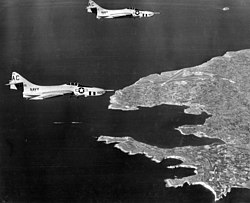
Joint Helicopter Command Flying Station Aldergrove, also known as simply JHC FS Aldergrove, is a British military base located 4.4 miles (7.1 km) south of Antrim, Northern Ireland and 18 miles (29 km) northwest of Belfast, and adjoins Belfast International Airport. It is sometimes referred to simply as Aldergrove which is the name of a nearby hamlet.

Royal Air Force Tangmere or more simply RAF Tangmere is a former Royal Air Force station located in Tangmere, England, famous for its role in the Battle of Britain.

Royal Air Force Wyton or more simply RAF Wyton is a Royal Air Force station near St Ives, Cambridgeshire, England. The airfield is decommissioned and is now used by the UK Strategic Command.
Royal Air Force Long Kesh, or more simply RAF Long Kesh, is a former Royal Air Force station at Maze, Lisburn, Northern Ireland.
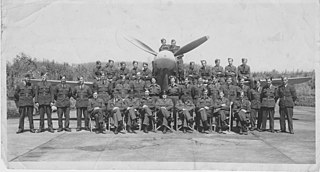
Royal Air Force Ballyhalbert or more simply RAF Ballyhalbert is a former Royal Air Force station at Ballyhalbert on the Ards Peninsula, County Down, Northern Ireland
Royal Air Force Blackbushe or more simply RAF Blackbushe is a former Royal Air Force station in Hampshire, England, during the Second World War. It is now Blackbushe Airport.

Tain Air Weapons Range is a Ministry of Defence air weapons range on the Dornoch Firth near Tain in Scotland. Royal Air Force aircrews from RAF Lossiemouth are trained in air weaponry on the range, along with NATO aircrew.
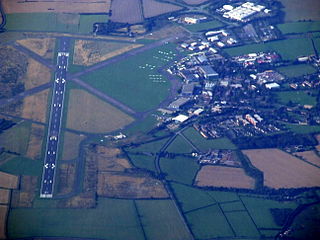
Cranfield Airport is an airfield just outside the village of Cranfield, in Bedfordshire, England. It is 7 NM south-west of Bedford and 5.5 NM east of Milton Keynes. It was originally a Second World War aerodrome, RAF Cranfield. It is now used for business aviation, private flights, and for research and development activities.
Royal Air Force Bircham Newton or more simply RAF Bircham Newton is a former Royal Air Force station located 2.1 miles (3.4 km) south east of Docking, Norfolk and 13.4 miles (21.6 km) north east of King's Lynn, Norfolk, England.
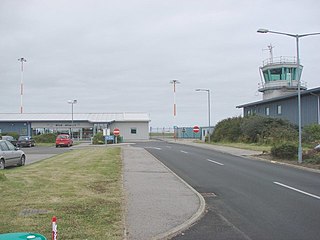
Wick John O' Groats Airport is located one nautical mile north of the town of Wick, at the north-eastern extremity of the mainland of Scotland. It is owned and maintained by Highlands and Islands Airports Limited. The airport provides commercial air travel connections for Caithness, with scheduled services to Aberdeen Airport and, until early 2020, Edinburgh. It remains regularly used by helicopters servicing local offshore oil operations and the Beatrice Offshore Windfarm. It also serves as a stop-over for light aircraft ferry flights between Europe and North America via Iceland. The airport also operates an out of hours call-out service for air ambulances, coastguard and police flights.

Llanbedr Airport, formerly RAE Llanbedr, is an operational general aviation airport located in the Snowdonia National Park near the village of Llanbedr, Gwynedd, northwest Wales.
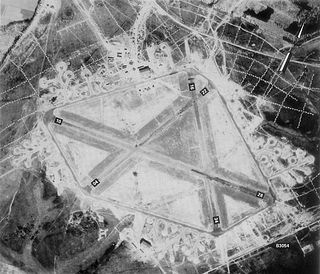
Royal Air Force Beaulieu or more simply RAF Beaulieu is a former Royal Air Force station in the New Forest, Hampshire, England. It was also known as Beaulieu airfield, Beaulieu aerodrome and USAAF Station AAF 408. It is located on Hatchet Moor 1 mile (2 km) west of the village of East Boldre, about 2 miles (3 km) west-southwest of the village of Beaulieu and 4 miles (6 km) north-east of Lymington.

Royal Air Force Westhampnett or more simply RAF Westhampnett is a former Royal Air Force satellite station, located in the village of Westhampnett near Chichester, in the English County of West Sussex.

Royal Air Force Detling, or more simply RAF Detling, is a former Royal Air Force station situated 600 feet (180 m) above sea level, located near Detling, a village about 4 miles (6.4 km) miles north-east of Maidstone, Kent.
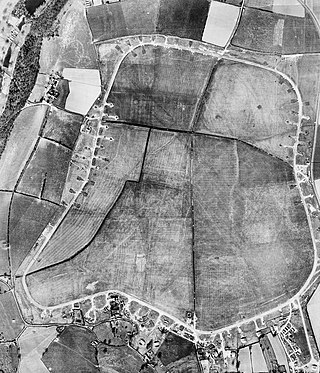
Royal Air Force Zeals, or more simply RAF Zeals, is a former Royal Air Force station in Wiltshire, sited to the north of the village of Zeals, next to the village of Stourton and the Stourhead estate.
Royal Air Force Bramcote, or more simply RAF Bramcote, is a former Royal Air Force station located 3.5 miles (5.6 km) south-east of Nuneaton, Warwickshire, England used during the Second World War. It was later transferred to the Admiralty and was known as Royal Naval Air Station Bramcote,, and when commissioned became HMS Gamecock. When it subsequently transferred to the British Army from the Admiralty, it was called Gamecock Barracks.

Royal Air Force Hawkinge or more simply RAF Hawkinge is a former Royal Air Force station located 13.23 miles (21.29 km) east of Ashford, 2.2 miles (3.5 km) north of Folkestone, Kent and 7.1 miles (11.4 km) west of Dover, Kent, England. The airfield was used by both the Royal Flying Corps and the Royal Air Force during its lifetime and was involved during the Battle of Britain, as well as other important aerial battles during the Second World War and the early stages of aerial usage in war in the First World War.

Royal Air Force Culmhead or more simply RAF Culmhead is a former Royal Air Force station, situated at Churchstanton on the Blackdown Hills in Somerset, England.
Royal Air Force Macmerry or more simply RAF Macmerry is a former Royal Air Force satellite station located 4.5 miles (7.2 km) west of Haddington, East Lothian, Scotland and 11.4 miles (18.3 km) east of Edinburgh. It was situated immediately to the north east of Macmerry on the north side of the A1 road. It has also been called RNAS Macmerry and unofficially RAF Tranent and RAF Penston during its life.
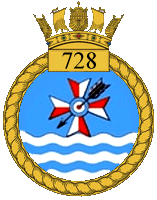
728 Naval Air Squadron was a Naval Air Squadron of the Royal Navy's Fleet Air Arm. It was formed at the beginning of May in 1943, as a Fleet Requirement Unit, at RNAS Gibraltar. It provided detachments at Tafaraoui, in Algeria and later at Oujda in Morocco. Moving to RNAS Dekheila, in Egypt, during June, it then merged into 775 Naval Air Squadron during July.
